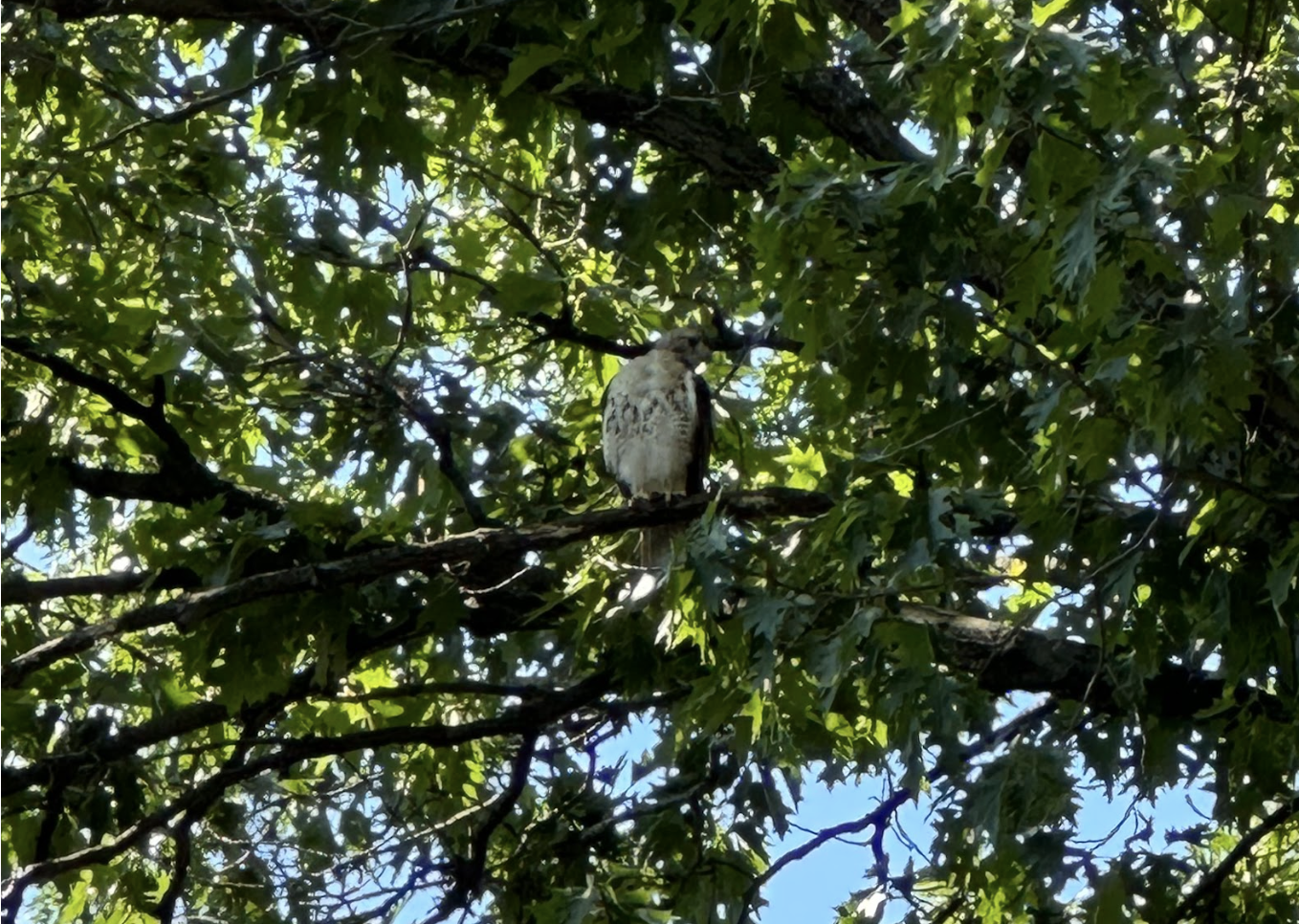McGolrick Bird Club Issue 008
July 29th Bird Walk
The McGolrick Bird Club lives by the thesis that even when bird sightings are few, birdwatching is still a valuable, radical act of mindfulness — where punk bird zen, not any ultimate species count, is why we walk around with our senses turned up.
Well, Saturday’s walk put that orientation to its most extreme test yet. Summer is known to be a slow birding season here in NYC, but perhaps because the juveniles we’ve enjoyed monitoring are growing up and fledging 🥹 (more on this below), our walk, though punkbirdzen and good vibe heavy as always, was the quietest yet.
We did notice:
The Top 5 Common Birds of McGolrick: European Starlings, House Sparrows, American Robins, Mourning Doves, and yes Pigeons
Chimney Swifts flapping overhead
A calling Northern Cardinal (check the park’s northeast corner for laser beam calls like these; or the southwest corner for metallic chips like this.)
Common Grackles — listen for loud CHUCKS
Laughing Gull flyovers — look for their distinctive black heads
A last (? - again, more below) call from a Northern Flicker (about 20 minutes after the walk ended 🙄)
And you know what? Maybe quiet is good. Sometimes we do need to slow down, pull back, reset, and seek.. only to find a whole lot of nothing.
🎵 FLEDGLINGS — Nothing more than FLEDGLINGS 🎵
While I believe what was just written, it has been a surprisingly emotional few weeks in McGolrick Park for those lucky enough to follow the saga of our seemingly moved-on Northern Flickers.
NSFW photo taken back in May in McGolrick ParkBecause on June 21, our juvenile flicker left the nest. This was in many ways a triumph. Two birds of a species whose numbers are declining, who fought grittily for a breeding cavity in our park, did manage to retain that hole and raise a son in it. It was a beautiful, inspiring, wondrous thing to behold.
The juvenile, moments before leaving its nest for the first time.But as of this writing, it’s been approximately 2 days without evidence of a Northern Flicker in McGolrick Park. That’s the longest stretch since early April when flickers first announced themselves via their brilliant monkey call.
This likely means the juvenile, who was quickly taught the ropes of bird survival by its dutiful parents during the weeks following fledging, has moved on. Parents too.
🤘😭
Farewell, dear Flickers. We hope you thrive and perhaps return to McGolrick Park someday.
Shoutout to all the bird club walkers who gasped at the flickers’ shift changes, all the parkgoers who gave impromptu Northern Flicker updates to your correspondent, and SPECIAL SHOUTOUT to bird club members Tammy, Millie, Stephen, Jess, Julia, Monise (NP), Will, and Dan — for keeping watch over (and even keeping a freaking spreadsheet on) McGolrick Park’s Northern Flickers:
Northern Flicker Safety CrewEmotional iPhone snap of the juvenile resting on PS 110 after its first flight.That’s it for this week! As we’ve been seeing an uptick in the number of birds of prey in and around McGolrick Park over the last two weeks, we’ll focus on those in the next newsletter. Keep your eyes and ears open until then.
Red-tailed Hawk, one of four birds of prey seen in/around McGolrick recently, photographed on 8/1/23UPDATE: Our flicker family was noticed in McGolrick’s western canopy around 9 AM on August 2nd, moments before sharing this post. So get out of your flicker feelings, then your apartment and listen for monkey calls before they really do leave!
That’s it for this week!
Let’s get zen and be punk and go birding together—and see what other birds show up!






